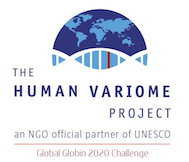
Τhe HVP Global Globin 2020 Challenge is organising a fringe meeting at the 14th International Conference on Thalassaemia and Other Haemoglobinopathies. The meeting, entitled "Towards Comprehensive Global Epidemiology and Prevention of Haemoglobinopathies", will be held on 19th November 2017 at the Grand Hotel Palace – Ilida Meeting Room, Thessaloniki, Greece, between 14:00 and 16:30.
The GG2020 Challenge seeks to apply recent developments in human genomics, including the systematic collection and sharing of variation data, to fighting haemoglobinopathies (notably thalassaemias and sickle cell disease) in low- and middle-income countries. The GG2020 meeting, a great opportunity to forge new collaborations, will highlight the main goals and partnerships (including with WHO and UNESCO) of the Challenge and will provide an update on past achievements, ongoing projects and future plans.
More information: Programme




